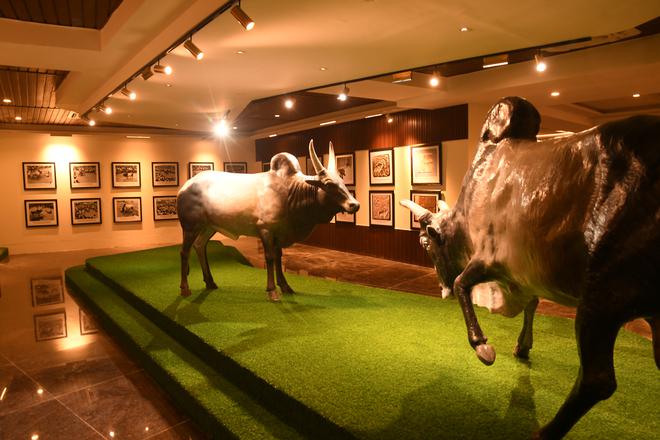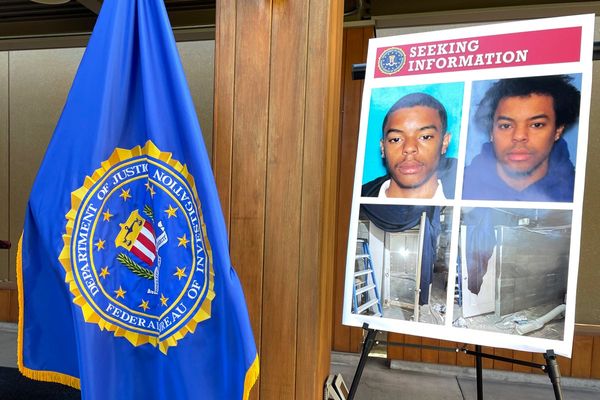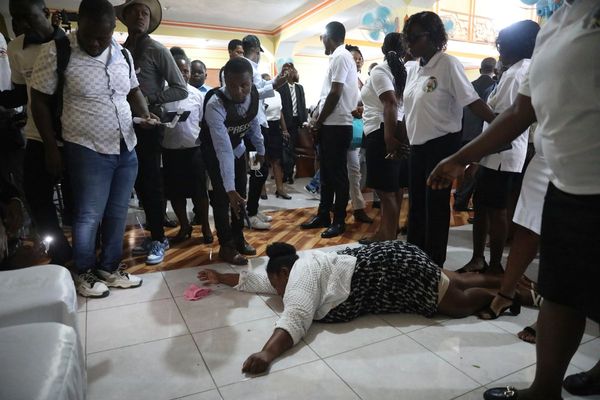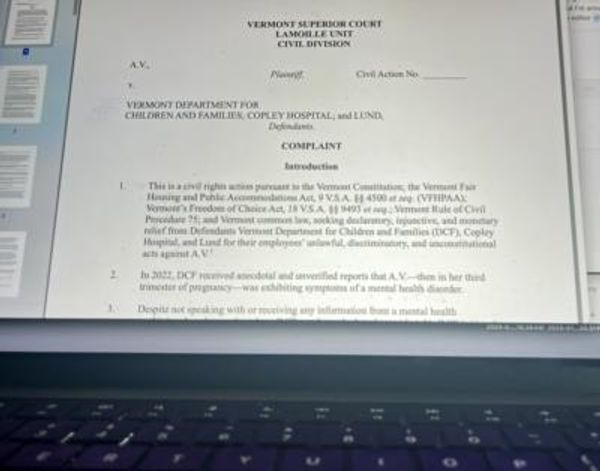
Jallikattu, considered one of the traditional sports of Tamil Nadu, is also a cultural identity. In the sport, the arena, especially the ‘vaadivasal’ (the space through which the bull enters the field to face the players), holds significant importance. In places that have become synonymous with the sport, like Alanganallur and Palamedu in Madurai district, the arenas where jallikattu has been held for centuries are located near temples, and they hold a lot of sentimental value for the locals. Besides, the uniqueness of the arenas lends a distinct flavour to the sport.
If the smaller enclosure at Alanganallur makes the sport more spectacular, the vast arena on a river bed at Palamedu makes it difficult for the players to win since the bulls can run away easily.
The popularity of the sport surged after the mass protests across the State in 2017, which resulted in the enactment of a special legislation to overcome the Supreme Court-imposed ban on the sport. Although the sport is unique and intertwined with the local customs and culture, the arenas lacked modern amenities and the capacity to take in more visitors.
Many facilities
Recognising this, the Tamil Nadu government in 2022 announced a new arena in Madurai district. The construction of the arena at Keelakarai near Alanganallur is almost complete. The arena is ready to be opened soon. The arena, constructed on an area sprawling 16 acres in a picturesque location on the foothills of Vaithumalai, has many state-of-the-art facilities for the bull tamers and the bulls, officials say.
The ground floor, measuring 27,534 square feet, has ‘vaadivasal,’ administration office, emergency treatment room, media room, bull registration room, museum, changing room, stalls, lockers and dormitories. The first floor (16,921 square feet) has a VIP suite and lounge, pantry and dormitories and the second floor (9,020 square feet) is equipped with a store and equipment room. The viewers’ gallery would have 3,700 seats in two floors. The arena will also have other facilities, including a bull shed, bull barn and veterinary hospital.
A museum on the premises will showcase photographs, sculptures, paintings, and drawings on jallikattu. The art curator of the museum, who did not want to be named, said the idea was to educate the visitor with details of the sport, starting from its history to the techniques followed. “We have curated the photographs of how bulls starting from the ancient period were domesticated, mentions of ‘Earu Thaluvuthal’ [old name for the sport] in the Sangam literature, ancient coins, terracotta, vintage photographs of the sport and photographs depicting the emotional connect of the people with the sport,” he said.
In addition to this, sculptures (hero stones) based on evidence about the persons who lost their lives fighting for their villages for various causes, who the local residents consider as martyrs, and about the people who lost their life in the sport, were also being displayed.
An architect involved in designing the arena said details of stadia built for bull fights in countries like Brazil and Spain were studied to arrive at a design appropriate for jallikattu but also flexible enough for other sports and events.
‘Vaadivasal’ holds a special place in the sport. C. Santhalingam, former Assistant Director of the State Department of Archaeology, said the word ‘vaadi’ could have originated from ‘paadi’, which means ‘patti’ or cow shed. “The word ‘paadi’ evolved to become ‘vaadi’. This, along with the word ‘vaasal’ meaning door, turned into ‘vaadivasal’, as the bull goes through the door-like structure to enter the field.”
‘No fixed design’
The art curator, speaking about the ‘vaadivasal’, said there were different types of ‘vaadivasal’ used across the State, determined on the basis of the number of bulls and the economic condition of the villages. “There is no fixed design, but as jallikattu conducted in Madurai follows a similar structure for ‘vaadivasal’, the one in the arena was also constructed with the same design,” he added. The architect said a lot of thinking went into designing the spaces used for bulls, as even a single mistake could be a hindrance to the bulls brought to the arena.
Though the modern arena is soon to be inaugurated, there is hesitance among the villages renowned for jallikattu to move their events there. They have demanded that the competitions be held at the traditional places — Avaniapuram, Palamedu, and Alanganallur — as they consider changing location as inauspicious and against the tradition followed for decades.
A.P. Saravanakumar, a resident of Alanganallur, says, “The location at Alanganallur is unique as the field itself is curved. This makes it challenging for the bulls to escape from being embraced.” “Bulls winning here are celebrated owing to the complex playing field,” he adds. ‘Vaadivasal’ is near the Kottai Muni Temple and the end point is near the Kaliamman Temple. “This set-up cannot be seen anywhere in the State,” he says.
‘A monument’
R. Govindarajan, of the Alanganallur jallikattu organising committee, says that though the committee wants the sport to be conducted at the traditional places, Tamil people would consider the arena a monument to the sport.
Though the government has announced that the jallikattu this year will be held at the traditional places, it remains to be seen how this facility, constructed at a cost of ₹61 crore, is put to an efficient use.







